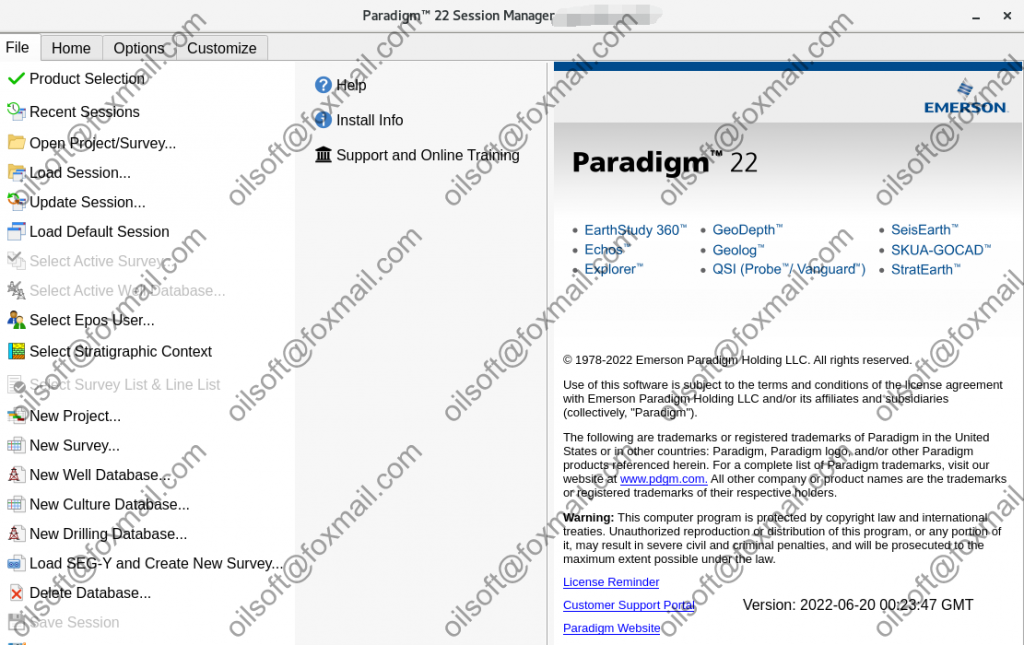Emerson ParadigmВ E&PВ companies, which need to handle the vast amount of data that is currently available to them, need advanced technologies to help them optimize their work.
Emerson ParadigmВ ™, the industry-leading technology innovator, is involved in the release solutions of Paradigm 18 with the goal of delivering accurate results in less time and with less user effort.
Paradigm 22 enhances your work experience through automation, integration, collaboration, andВ productВ optimization, and provides the solutions it needs in todayвҖҷs rapidly changing world. With the increasing development of data analysis and analysis software in the oil and gas industry, countless companies are trying to provide comprehensive software that can meet the needs of users in the field of data analysis and analysis in the oil and gas industry.
Emerson Paradigm is one of the software made by Emerson company, which is well-known among those interested in analyzing and analyzing data in the oil and gas industry. This software, with all the facilities required by the user in the field of data analysis and review in the oil and gas industry, has been able to achieve good popularity over the years. Data analysis software in the oil and gas industry should be simple, practical and fast according to the volume of use and have the ability to adapt to all systems and hardware that Emerson Paradigm software has well covered these needs. .
Different user comments have shown that Data analysis software in the oil and gas industry should be simple, practical and fast according to the volume of use and should be compatible with all systems and hardware that Emerson Paradigm software has well covered these needs. .
Different user comments have shown that Data analysis software in the oil and gas industry should be simple, practical and fast according to the volume of use and have the ability to adapt to all systems and hardware that Emerson Paradigm software has well covered these needs. .
Different user comments have shown thatВ Emerson Paradigm software has done wellВ in meeting the needs of data analysis and analysis in the oil and gas industry.
New Features and Enhancements
Coordinate Systems Service (CSS)
-Added support for transforming coordinates currently in Pulkovo 1942, Pulkovo 1995 or WGS 1984
based coordinate reference systems to the Geodezicheskaya Sistema Koordinat 2011 coordinate reference system.
-The transformation method used by вҖңDeutsche Hauptdreiecksnetz вҖ“ WGS 1984вҖқ was changed to a more accurate one, as recommended by the EPSG dataset (transformation code 1777).
-Added new units Rayleigh, megaRayleigh, (Rayleigh)squared, (megaRayleigh)squared.
-Added new units (per meter second, per foot second, meter per square meter, meter per square kilometer, foot per square foot and foot per square mile), new dimension (inverse length per time), and new measurements (inverse length per time, length per area).
-Added new Symbol aliases for inverse length per time units. These are вҖң1/m.sвҖқ for the unit вҖңper meter
secondвҖқ and вҖң1/ft.sвҖқ for the unit вҖңper foot secondвҖқ.
Epos Services Control Panel
-The Create New Segment dialog box for Windows platform, now provides the option to configure a PNS server to retrieve OS users using LDAP search.
-A new parameter, ORBPORTRANGE, was added to the PNS setting dialog box for specifying the range of ports to be used for PNS services, and therefore facilitate the configuration of firewalls.
-For ease of use, the data path threshold is now set and displayed in GB. Previously it was defined as an
integer percentage of the total data path size, and could be unnecessarily large.
-Our support for Active Directory now extends to the use of specific organizational units (ou).
Fixed Problems
Coordinate Systems Service (CSS)
The Epsg alias 1065 to Coordinate frame translation is now assigned to the correct operation вҖ“ Position
vector translation. Previously, this alias was assigned incorrectly.
To address an issue whereby ArcGIS was not being able to recognize the WKT, we used for certain projected coordinate systems, we have removed the option to use the JHS UTM map projection operation. From now on, only the USGS implementation of the UTM map operation will be available.

